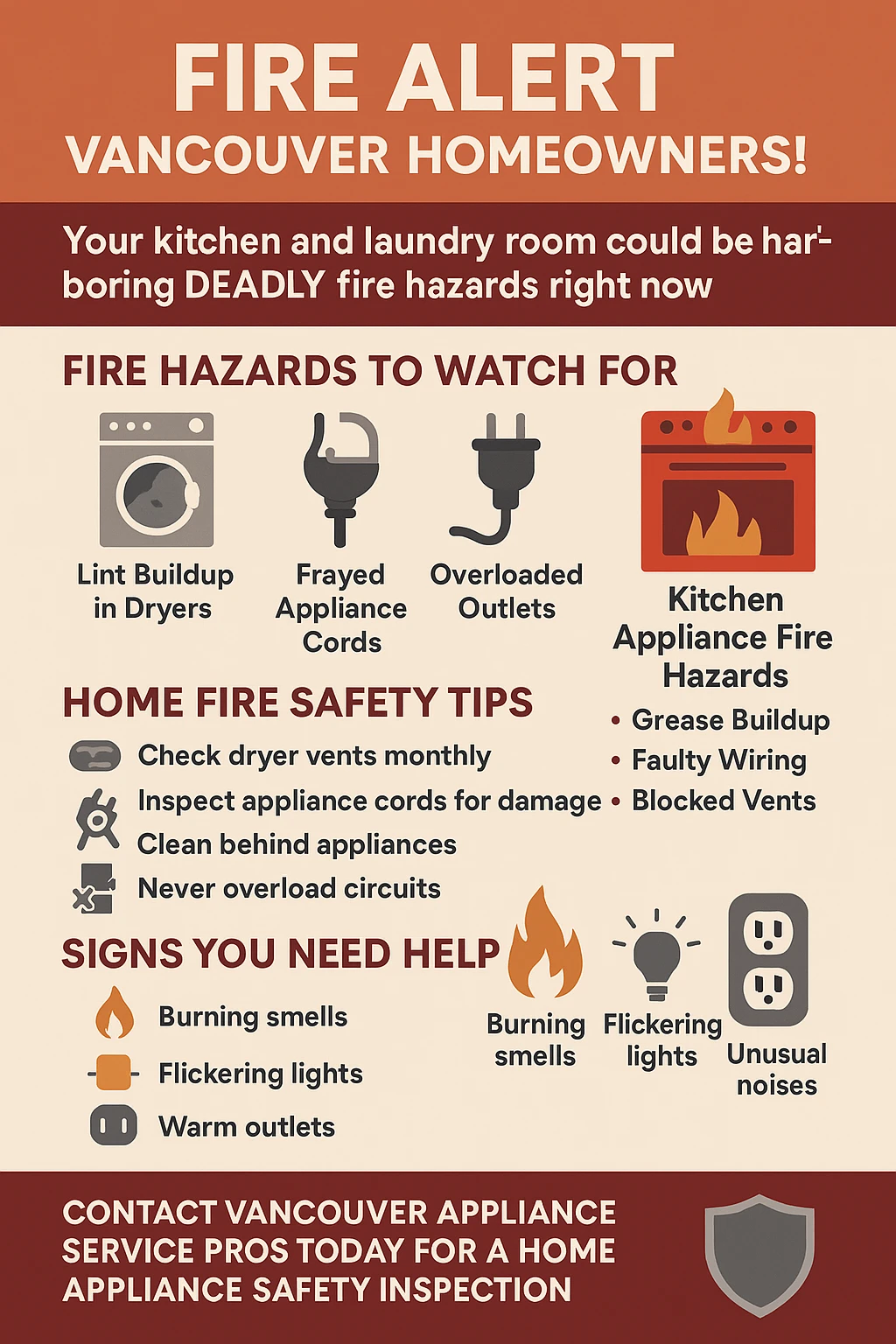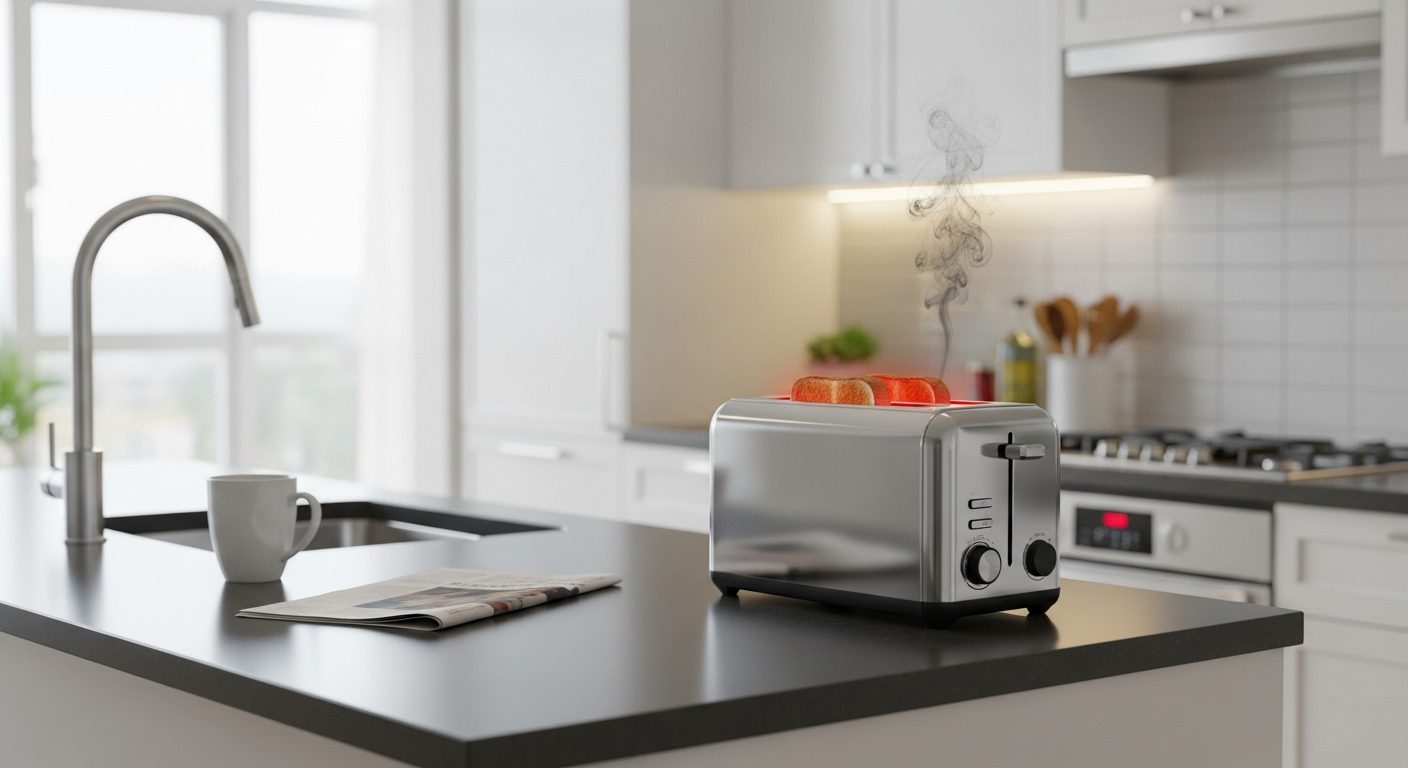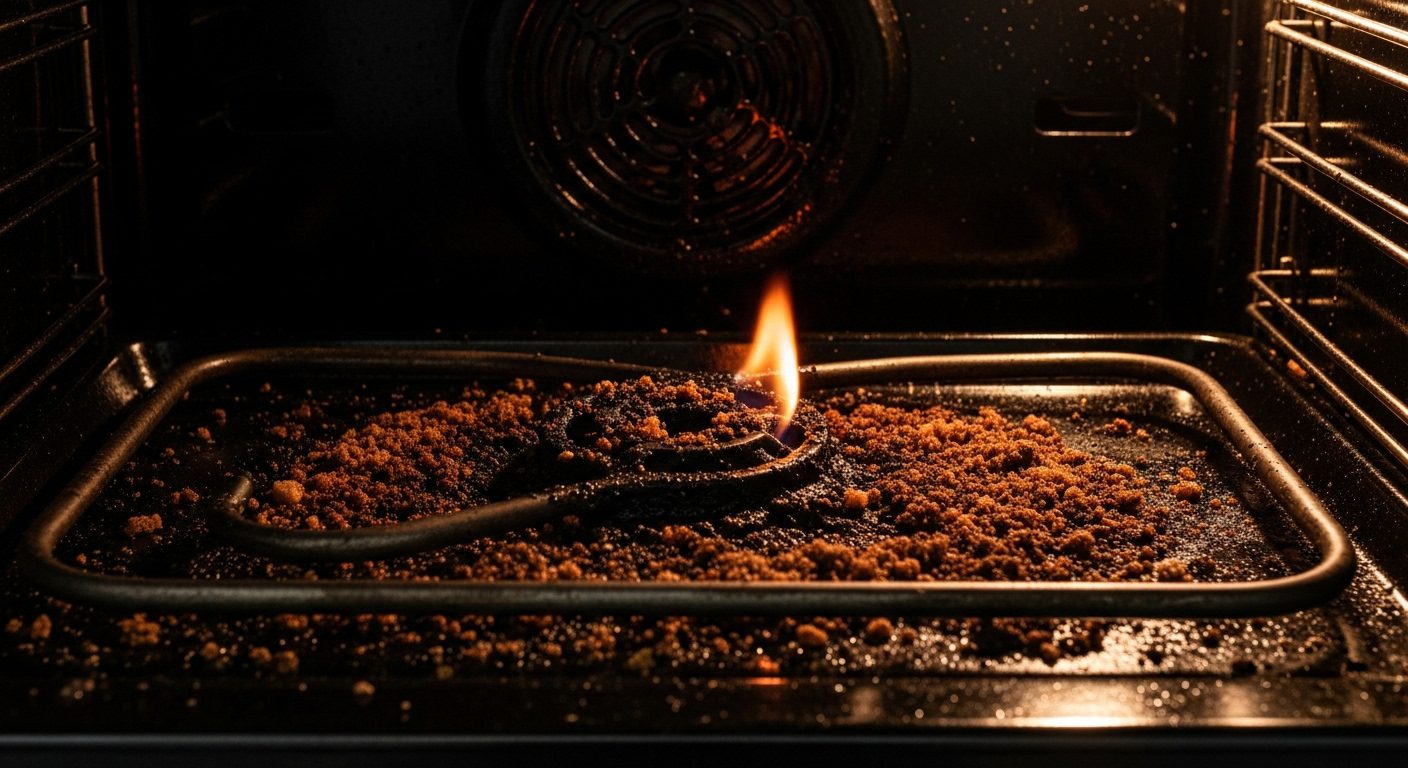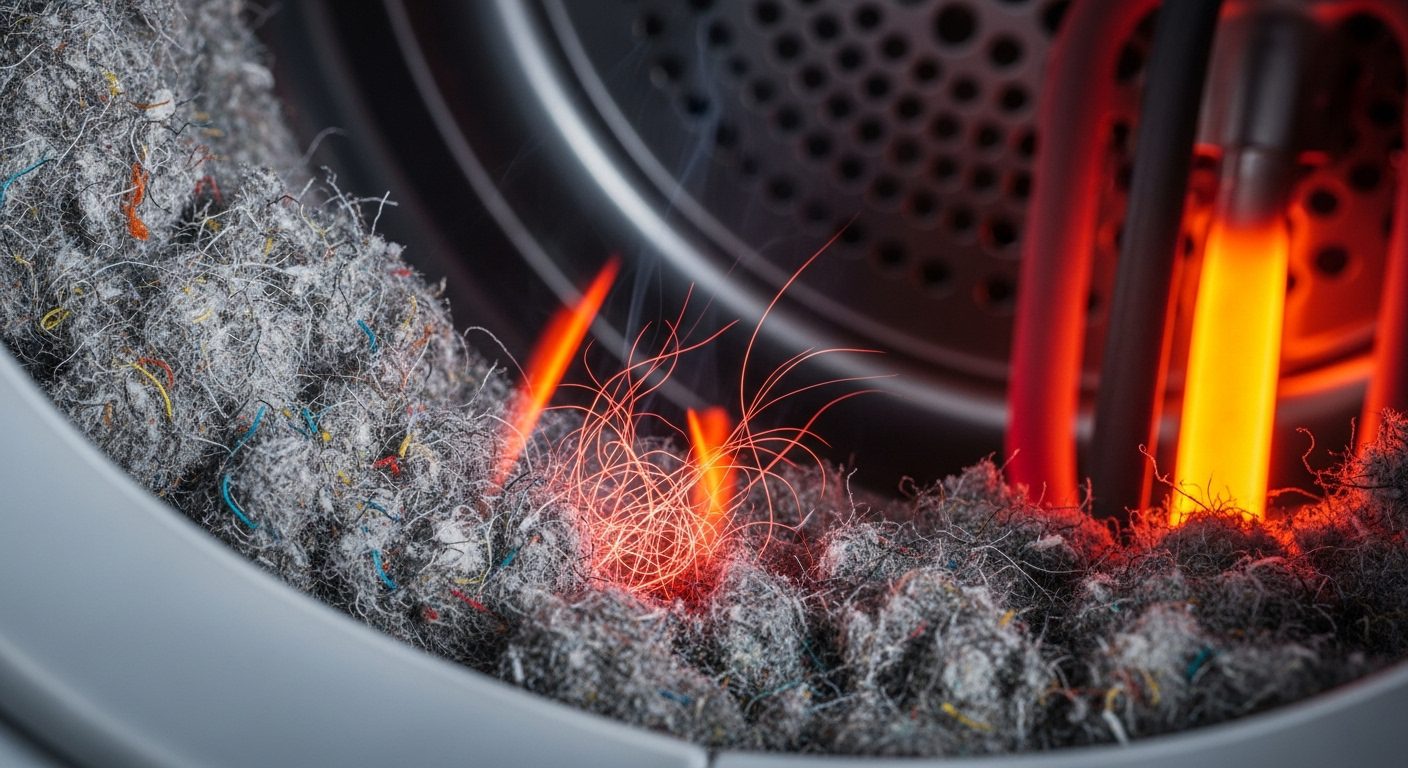Vancouver Appliance Fire Safety: Hidden Fire Hazards in Your Kitchen and Laundry Room (Plus Prevention Tips That Could Save Your Home)
Worried about hidden fire hazards lurking in your everyday appliances? Dive into our comprehensive guide covering the most dangerous kitchen and laundry room fire risks that Vancouver homeowners face, plus proven prevention strategies that could save your home.Picture this: you’re sipping your morning coffee, scrolling through your phone, when suddenly you smell something burning. That innocent-looking toaster that’s been faithfully browning your bread for years? It just became a fire hazard faster than you can say “burnt bagel.” As someone who’s spent way too much time researching home safety (occupational hazard of being obsessed with keeping my Vancouver condo from turning into a bonfire), I’ve discovered some pretty shocking stats about appliance fires that’ll make you look at your kitchen differently.Vancouver Fire Rescue Services reported a staggering 4,309 fires in 2023 alone, and here’s the kicker – many of these could have been prevented with basic appliance safety knowledge. The thing is, most of us treat our appliances like faithful servants that’ll never betray us, but the reality is that these everyday heroes can turn into household villains without proper care. From that seemingly harmless dryer in your laundry room to the trusty oven that’s helped you through countless dinner parties, every appliance in your home carries hidden fire risks.What’s particularly wild is that kitchen ovens are responsible for over 50% of domestic appliance fires, making them the biggest fire culprit in Canadian homes. But here’s what really gets me fired up (pun intended) – most of these incidents are totally preventable with the right knowledge and maintenance habits.
Key Outtakes:
- Kitchen ovens cause over 50% of domestic appliance fires, making them the highest-risk appliance in Canadian homes
- Dryers cause approximately 15,500 home structure fires annually across North America, resulting in $192 million in property damage
- Nearly 48% of residential fires are linked to distraction or human error during appliance operation
- Regular lint removal and electrical cord inspection can prevent up to 80% of common appliance fires
- Vancouver’s humid climate creates unique challenges for appliance ventilation and moisture-related electrical hazards

The Hidden Fire Hazards Lurking in Your Kitchen
Let me start with a reality check that honestly blew my mind when I first learned about it. Your kitchen isn’t just the heart of your home – it’s also the most fire-prone room in your house. And I’m not just talking about the obvious stuff like leaving a pan on the stove (though that’s definitely a problem). The real troublemakers are often the appliances we use without a second thought.Take ovens, for example. These bad boys are responsible for more than half of all domestic appliance fires, which is absolutely bonkers when you think about it. The main culprits? Grease buildup, food debris, and – this one’s particularly sneaky – faulty heating elements that can spark fires even when you’re not actively cooking. I learned this the hard way when my neighbor’s oven decided to self-destruct during what should have been a peaceful Sunday afternoon. The fire department later explained that years of accumulated grease had created the perfect storm for ignition. But here’s where it gets really interesting (and slightly terrifying). Microwaves, those convenient little boxes we barely think twice about, can turn into fire-starting machines faster than you can reheat last night’s leftovers. Metal objects cause sparks and arcing that can ignite food particles or surrounding materials, but that’s just the tip of the iceberg. Overheating food, using improper containers, or running a microwave with faulty components can all lead to fires that spread beyond the appliance itself.The stovetop situation is even more dramatic. Get this – 61% of all reported cooking fires are due to ranges or cooktops, with electric ranges posing a greater fire risk than gas ranges. Unattended equipment caused 31% of home cooking fires between 2014-2018, which basically means we’re our own worst enemies when it comes to kitchen safety. That quick trip to grab something from another room while your dinner is cooking? Yeah, that’s exactly how fires start.
But here’s where it gets really interesting (and slightly terrifying). Microwaves, those convenient little boxes we barely think twice about, can turn into fire-starting machines faster than you can reheat last night’s leftovers. Metal objects cause sparks and arcing that can ignite food particles or surrounding materials, but that’s just the tip of the iceberg. Overheating food, using improper containers, or running a microwave with faulty components can all lead to fires that spread beyond the appliance itself.The stovetop situation is even more dramatic. Get this – 61% of all reported cooking fires are due to ranges or cooktops, with electric ranges posing a greater fire risk than gas ranges. Unattended equipment caused 31% of home cooking fires between 2014-2018, which basically means we’re our own worst enemies when it comes to kitchen safety. That quick trip to grab something from another room while your dinner is cooking? Yeah, that’s exactly how fires start.  What really gets under my skin is that distraction and human error account for 48% of residential fires. We’re literally creating our own fire hazards by not paying attention to what we’re doing. It’s like that moment when you put your phone down and immediately forget where you placed it, except with potentially catastrophic consequences.
What really gets under my skin is that distraction and human error account for 48% of residential fires. We’re literally creating our own fire hazards by not paying attention to what we’re doing. It’s like that moment when you put your phone down and immediately forget where you placed it, except with potentially catastrophic consequences.
Laundry Room Fire Risks: The Silent Threat
Now let’s talk about the room that most people completely overlook when thinking about fire safety – the laundry room. This seemingly innocent space houses some of the most fire-prone appliances in your entire home, and honestly, the statistics are absolutely mind-blowing. I had no idea how dangerous my laundry routine was until I dove deep into the research, and now I’m kind of amazed that more homes don’t go up in flames from laundry-related fires.Dryers are the absolute worst offenders in this category, and the numbers are frankly terrifying. These machines cause roughly 15,500 home structure fires every year, resulting in 29 deaths, 400 injuries, and $192 million in direct property damage. Let me put that in perspective – that’s more than 42 house fires every single day across North America, just from dryers. The crazy part is that most of these fires happen during winter months when we’re doing more indoor drying and ventilation is reduced, which means Vancouver’s wet season puts us at higher risk.The main villain here isn’t actually the dryer itself – it’s lint. That fluffy stuff that accumulates in your lint trap isn’t just reducing your machine’s efficiency; it’s creating a perfect fire starter. Lint is incredibly flammable, and when it builds up in heating elements, exhaust ducts, or around the motor, it can ignite faster than you’d believe possible. I’ve started treating lint removal like a sacred ritual because the alternative is potentially having my building go up in flames.  But here’s something most people don’t know – washing machines can be fire hazards too. Over 16,000 house fires are caused by clothes dryers and washing machines annually, and washers contribute to this through electrical failures, motor overheating, and believe it or not, lint buildup that can ignite when it contacts heating elements. Faulty wiring and overloading are common causes, which means if you’re cramming too many clothes into each load, you might be creating a fire risk.The ventilation situation in Vancouver makes this even more complicated. Our older housing stock often has inadequate laundry room ventilation, creating additional moisture and lint accumulation risks that require more frequent maintenance than newer constructions. Flexible foil or plastic ducts can sag and lead to lint buildup at low points, while metal ducts are more likely to contain fires if they do start. The longer vent pipes in modern installations create even more spaces for lint to collect, turning your entire ventilation system into a potential fire highway.
But here’s something most people don’t know – washing machines can be fire hazards too. Over 16,000 house fires are caused by clothes dryers and washing machines annually, and washers contribute to this through electrical failures, motor overheating, and believe it or not, lint buildup that can ignite when it contacts heating elements. Faulty wiring and overloading are common causes, which means if you’re cramming too many clothes into each load, you might be creating a fire risk.The ventilation situation in Vancouver makes this even more complicated. Our older housing stock often has inadequate laundry room ventilation, creating additional moisture and lint accumulation risks that require more frequent maintenance than newer constructions. Flexible foil or plastic ducts can sag and lead to lint buildup at low points, while metal ducts are more likely to contain fires if they do start. The longer vent pipes in modern installations create even more spaces for lint to collect, turning your entire ventilation system into a potential fire highway.
The Electrical Connection Between Appliances and Fire Risk
Let’s get real about something that most homeowners completely ignore until it’s too late – the electrical systems that power all these appliances. This is where things get seriously technical, but stick with me because understanding this stuff could literally save your home.Electrical distribution equipment fires might sound like something that only happens in commercial buildings, but they’re actually a significant risk in residential properties too. The numbers decreased slightly from 434 fires in 2018 to 423 in 2022, but that’s still over 400 house fires every year just from electrical distribution problems. When you consider that electrical equipment is the main heat source in over 23% of damaged residential buildings, it becomes clear that this isn’t just a minor concern.The real danger lies in the details that most of us never think to check. Those appliance cords that we take for granted? They’re actually ticking time bombs if they’re not properly maintained. Warning signs include frayed wires, cracked insulation, bent prongs, loose connections, and burn marks – basically, any visible damage should have you running to unplug the appliance immediately. Local fire departments reported nearly 45,000 home fires from electrical malfunction between 2012-2016, which means this isn’t some rare occurrence that only happens to other people.Here’s where it gets particularly relevant for Vancouver residents. Our coastal humidity can accelerate electrical corrosion in appliances, requiring more frequent electrical safety inspections than drier




